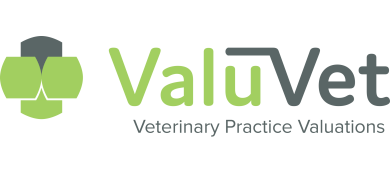Pricing models for Veterinary Practices
By Dr Hugh White MVSc MACVSc (Director CVE & ValuVet consultant)
There are two ends of the pricing spectrum evident in veterinary practices but three pricing models:
- those who elect to charge low fees and have a high caseload
- those who charge high fees, where the caseload is limited to those who can afford their services
- those who are ‘caught in the middle’ who for perceived competitive or altruistic reasons the owners of the practice believe that veterinary care should be affordable for everyone.
Which is the better way to go?
We have often said that ‘you can’t discount your way to prosperity’ and in the main, there is an element of truth in that statement for most practices but as with all ‘truisms’, there can be exceptions. Recently we have seen a profitable practice adopting a low pricing strategy, so how is it able to
survive with lower fees and others not? The main reason is knowing your market – the practice was located in a low socio-economic area (ABS and SEIFA data confirmed this) and the fees and service offering were set strategically to what the local market could afford. The other reason for the success of this practice was that their invoicing policy was to charge fees for all services in detail – fees were
then discounted to meet the expectation created by a fee estimate but they still ‘charged for everything’.
Low fees may mean that more people may attend the practice, therefore cases have to be seen quickly in order to get through each day, and there may not be sufficient time to work up difficult cases, to offer appropriate in-house care or to cater for complicated surgeries – some of these cases may need to be referred on. Cashflow is king so there is a need to ensure that payment is made, otherwise the returns will be insufficient for the owners to pay appropriate wages to their team. High caseload/ low fee practices are often very demanding on employees’ time and require quick thinking, good people skills and sound knowledge. This in turn necessitates employing people who are hard-working, committed and comfortable with pushing their patients and clients through.
What are the disadvantages of a low-price strategy?
Many vets find it stressful to have constant, back to back appointments and insufficient time to delve into more complicated cases in detail. Vets may also feel that they do not have enough time to hear their clients’ concerns or to treat their animals properly. Stress and job dissatisfaction create falling productivity, absenteeism, sickness and resignations. In some practices, we see the more senior practice owners shoulder the burden of cases or after-hours workload to compensate as younger associates cannot or will not work at the same pace. If a practice becomes known for high caseloads and insufficient vet support, potential employees will tend to look for other options, which can place the practice in a precarious position.
When it comes time to sell the practice, potential buyers may not want to run the practice the same way, but realise that if they buy the practice, raise the fees and charge for everything, many of the existing clients may disappear. Alternatively, higher fee practices can be at risk of pricing themselves out of the market, but the benefits are that that they are in a better position to offer the best possible treatment, which can be rewarding professionally for all concerned. Flexible practices are prepared to tailor
treatment options to suit the clients’ willingness to pay and there will always be some clients who will never use the practice. Extreme high end practices run the risk of declining caseloads in tougher economic times, but most successful practices can maintain caseload by offering realistic prices;
preparing transparent, printed estimates; charging for everything that they provide; and maintaining clear and open lines of communication.
